Students will create a sense of space and distance by using the repetition of shapes in varying sizes in a winter landscape. Recommended for 1st Graders.
Shape: The form of an object or its outline. We will be using the shape of triangles for the trees in varying sizes.
Space: The area within, around, above, or below an object. The placement of the various size trees will help in giving the composition a sense of distance.
Pattern: A combination of elements or shapes repeated in a recurring and regular arrangement.
Repetition: One object, shape, or line repeated.
Rhythm: The repetition or alternation of elements, often with defined intervals between them. Rhythm can create a sense of movement, pattern and texture. In this lesson we will use the different sizes of trees and the patterns and lines drawn into them to establish rhythm.
Variation (Variety): Using a range of different qualities or instances of and art element to create a desired visual effect. This lesson uses variations in color and shapes for trees in addition to the sizes of the painted snowflakes which can add to a more interesting composition.
Landscape: artwork portraying the visible features of an area of land.
Find a landscape work (painting or photograph) which demonstrates trees getting smaller as the space recedes.
Precut the sheets of all colors of green construction paper into three sizes of rectangles: 1”x2”, 1.5” x 3”, 2” x 4” - 9 rectangles in all for each student
Pass out all paper and one paintbrush to each student prior to starting lesson.
Set up drying area.
Before the lesson begins, ask students how we can determine how far something is from us. You can ask them if objects far away are bigger or smaller and also discuss the concept of overlapping.
During the lesson discuss the different textures of leaves or needles on trees. Some have prickly needles close together while others are less full and have more space between the branches. Remind them to keep that in mind while drawing patterns in their trees.
When adding the paint for snow, discuss that even the snowflakes can show distance. The ones further away will be simple dots while the ones really close will appear larger and have a shape to them.
While students are finishing the painting portion of their projects, ask students to point out which trees are the furthest and which are closest.
Students will use placement of trees correctly to show distance – smaller in background, larger in foreground
Students will use different lines and create patterns in each tree to make an interesting variety of textures
Discuss with students how they each created a sense of rhythm in their backgrounds by the placement of their painted snow dots. Some students will have a few scattered dots representing snow which is gently falling and others will have painted in dashes that created movement like a snow flurry.
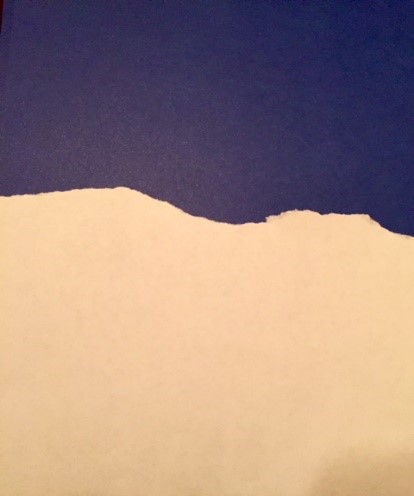
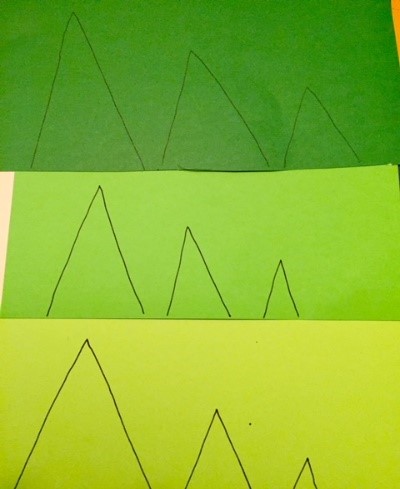

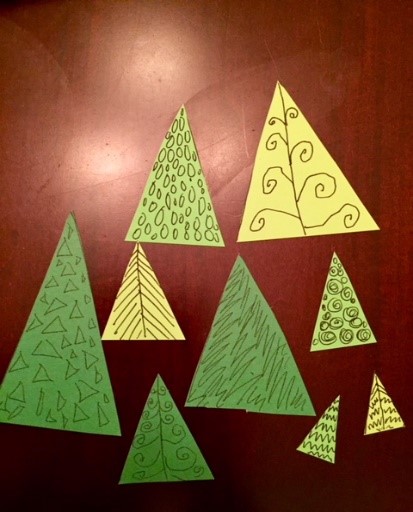

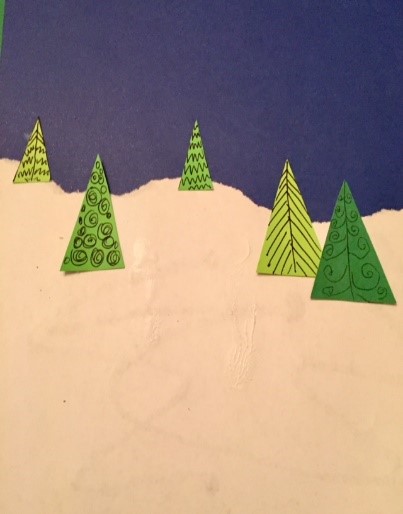
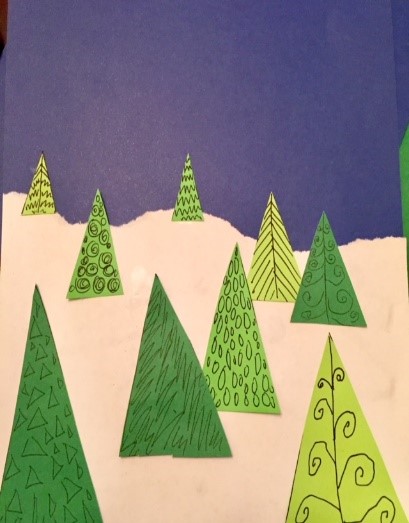
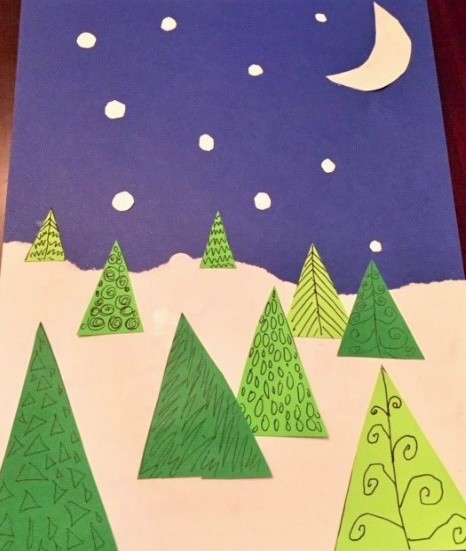
21st Century Thinking Skills
Goal setting, observing, making connections, visualizing, sequencing, comparing and contrasting, finding evidence, problem solving.
Habits of Mind
Creating, reflecting and thinking flexibly.
WA State Learning Standards
(VA:Cr.1.1.1) a. Engage collaboratively in exploration and imaginative play with materials. this happens when students work together to mix new colors.
(VA:Cr.1.2.1) a.Use observation and investigation in preparation for making a work of art.
(VA:Cr.2.1.1) a. Explore uses of materials and tools to create works of art or design. this happens when they learn how to mix colors using brushes and water.
(VA:Cr.2.3.1) a. Identify and classify uses of everyday objects through drawings, diagrams, sculptures or other visual means. this happens when explaining the color wheel.
(VA:Cr.3.1.1) a. Use art vocabulary to describe choices while creating art. this happens as you demonstrate, using color names and defining movement.
Arts Integration Opportunities
Science: bring in evergreen branches to draw the needles as they grow off the main stem.
Please note: These lesson plans are intended for non-profit use only. Use of these plans for commercial purposes should give attribution to the Issaquah Schools Foundation and be accompanied by a nominal donation at www.isfdn.org/donate. Thank you.
Fueling Success for Every Student, Every School